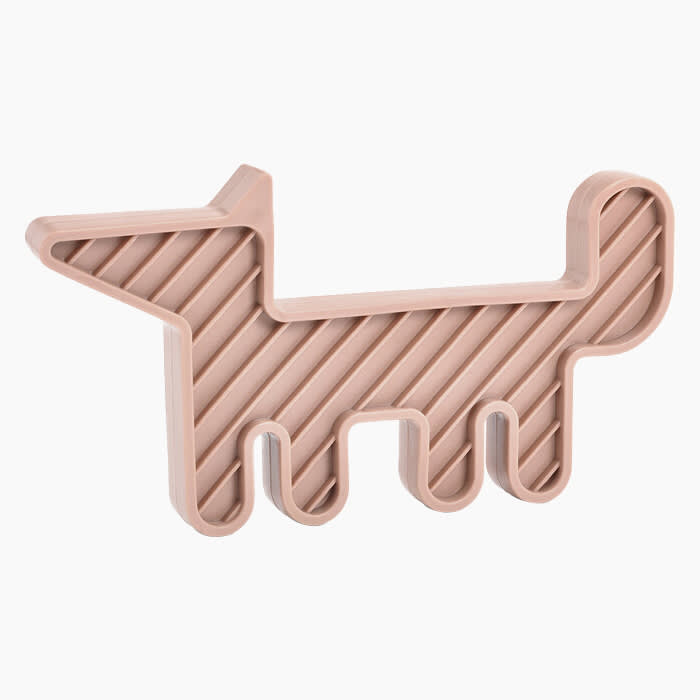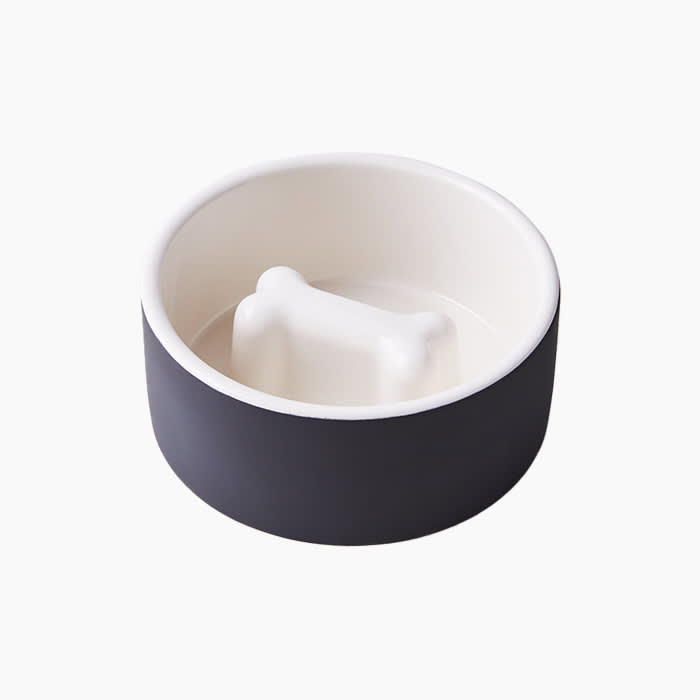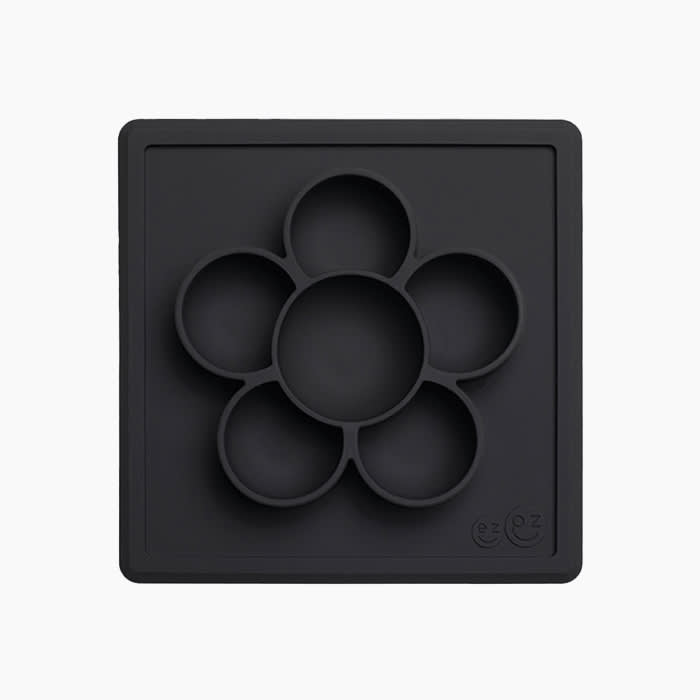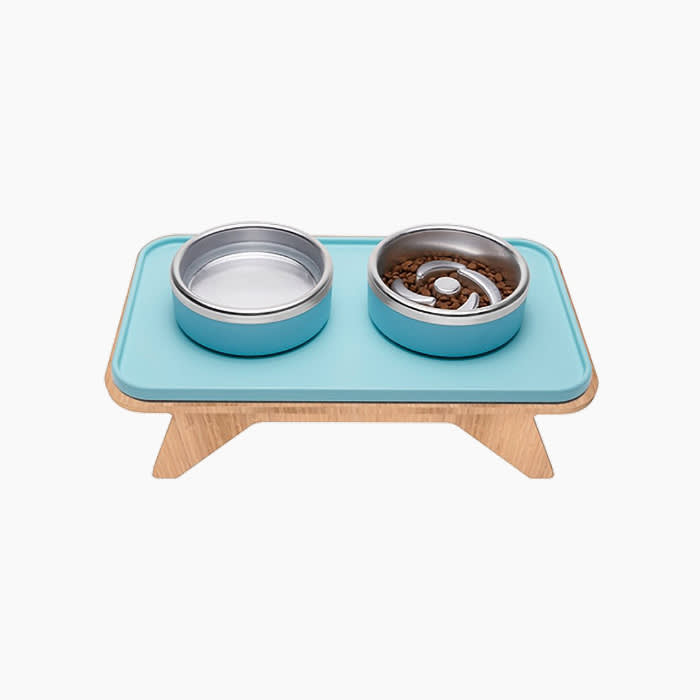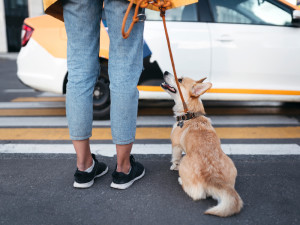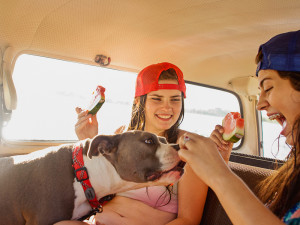How to Slow Down a Dog Who Eats Too Fast
Plus 6 stylish slow-feed dog bowls.
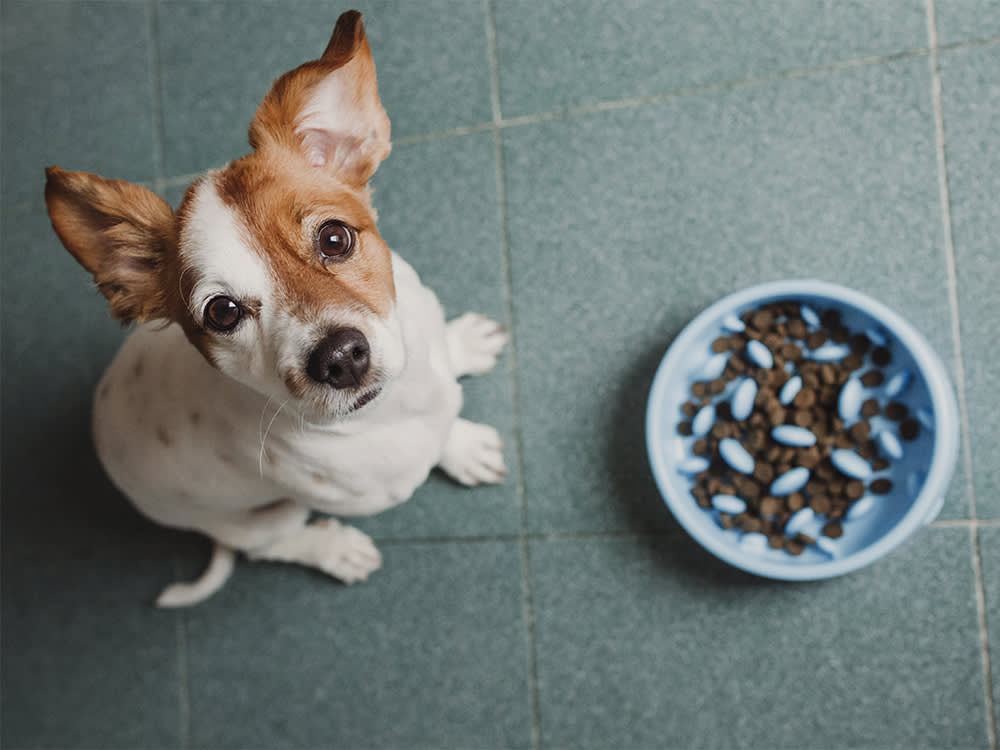
share article
Some dogs eat so fast that a reasonable person would bet good money that they either think their speediness will make a steak appear, or they think they only have 60 seconds before their kibble self-destructs. Many dogs do this throughout their lives without a problem — but they are flirting with disaster.
Eating so quickly doesn’t allow dogs to chew or even really taste their food. More worrisome is that a dog speed eating can cause choking, gagging, vomiting, and an even more serious condition called Gastric Dilation (colloquially known as bloatopens in a new tab). Canine bloat can result from a dog eating too much or too fast. The stomach expands because gasses build up to the point that the stomach can twist within the dog’s abdomen, preventing the gasses from escaping. The result: Circulation can be cut off to the stomach as well as to other organs including the heart. Dogs can die within hours of the onset of bloat, so it is a serious condition that requires immediate emergency medical attention if you suspect it. The bottom line? Eating fast is more than unsightly — it’s potentially dangerous.
How to Slow Down a Dog Who Eats Too Fast
I am regularly asked how to train a dog to eat more slowly, and my answer is that it’s easier to make it physically impossible for them to eat that fast than it is to train them to eat slowly. There are a lot of ways to do this, but they all use the same principle: Set up a system that doesn’t allow them to eat more than a little bit of food at a time.
There are a lot of commercial options out there for slow feed dog bowls, but let’s start with a DIY slow-eating dog bowl solution. Place one small bowl upside down inside a big bowl and then pour the food over the small bowl and into the bigger one. That creates a narrow “moat” of food so your dog can’t gulp the entire meal down. They have to work their way around the entire circle of food.
Another option is to place toys that are too big to swallow (and that are clean!) in a food bowl so the dog has to move them out of the way or work around them to reach the food. It’s also common for people whose dogs tend to eat a bowl of food in a matter of seconds to scatter the food over a broad area so the dog has to move around for each piece of food. This works very well in houses with a single dog. If more than one dog is around, this option is a poor choice because it promotes competition, stress, and can lead to aggression over the foodopens in a new tab.
My favorite way to keep dogs from scarfing down their food too quickly is to use a dog food puzzleopens in a new tab or slow feeder dog bowl that is specific to this purpose. Food puzzles are often loud, but many dogs will work for a long time to roll or push a Kong Wobbler around to get the food to fall out. Some people even use snuffle mats for fast eaters. Not only does this slow down their eating, but it also provides mental exercise and gives dogs valuable experience being persistent and handling a bit of frustration. Never a bad thing, right?
Slow-Feed Dog Bowls Picks
Dog bowls labeled "Slow Feed" help dogs change the pace of their eating. Discouraging dogs from gulping food down quickly has many benefits, including better digestion, helping to prevent vomiting, and gastric bloat. Check out our list of the best dog food puzzlesopens in a new tab; if a slow feeder dog bowl is more your speed, there are many options out there:

Karen B. London, PhD, CAAB, CPDT-KA
Karen B. London, Ph.D., is a Certified Applied Animal Behaviorist and Certified Professional Dog Trainer who specializes in working with dogs with serious behavioral issues, including aggression, and has also trained other animals including cats, birds, snakes, and insects. She writes the animal column for the Arizona Daily Sun and is an Adjunct Professor in the Department of Biological Sciences at Northern Arizona University. She is the author of six books about training and behavior, including her most recent, Treat Everyone Like a Dog: How a Dog Trainer’s World View Can Improve Your Lifeopens in a new tab.

